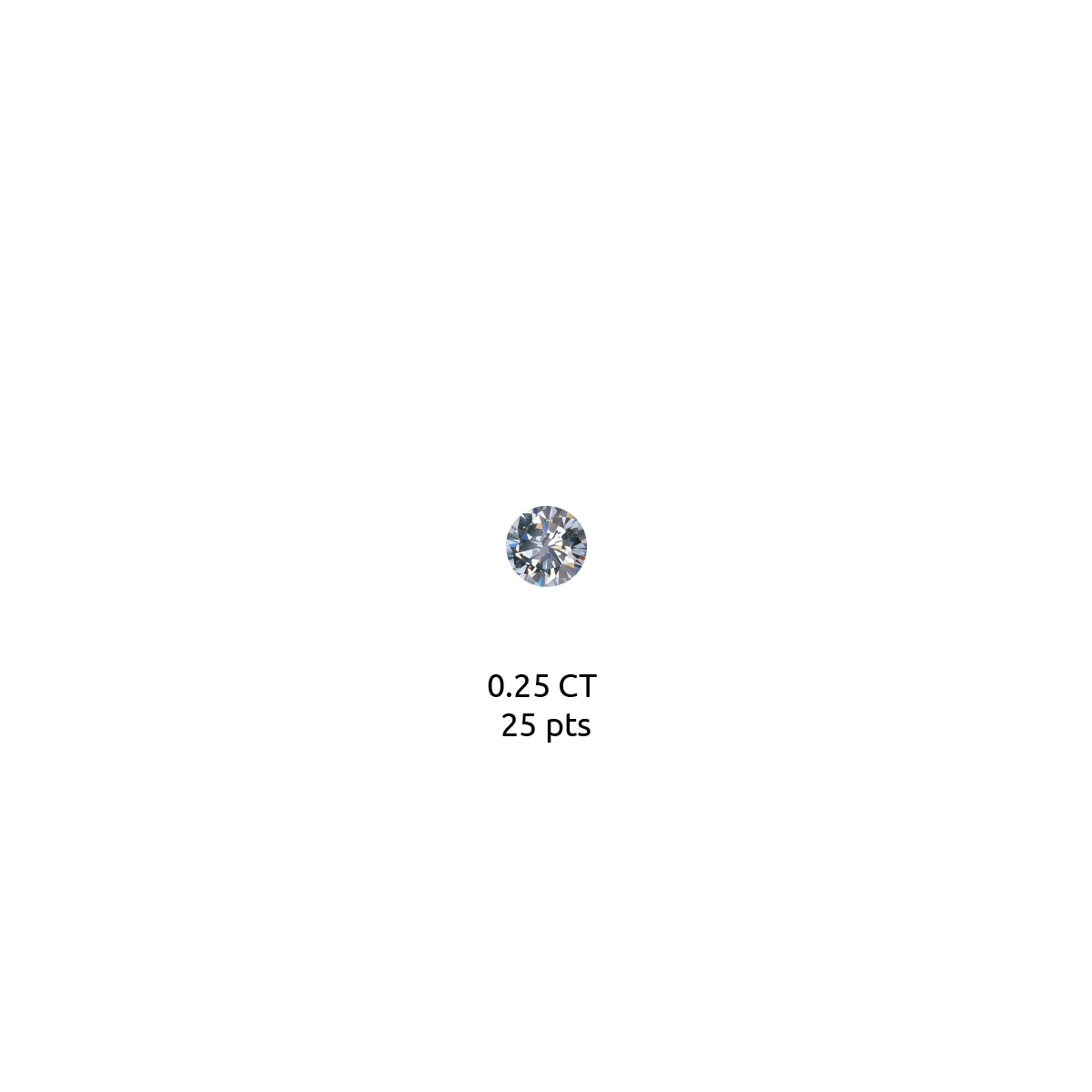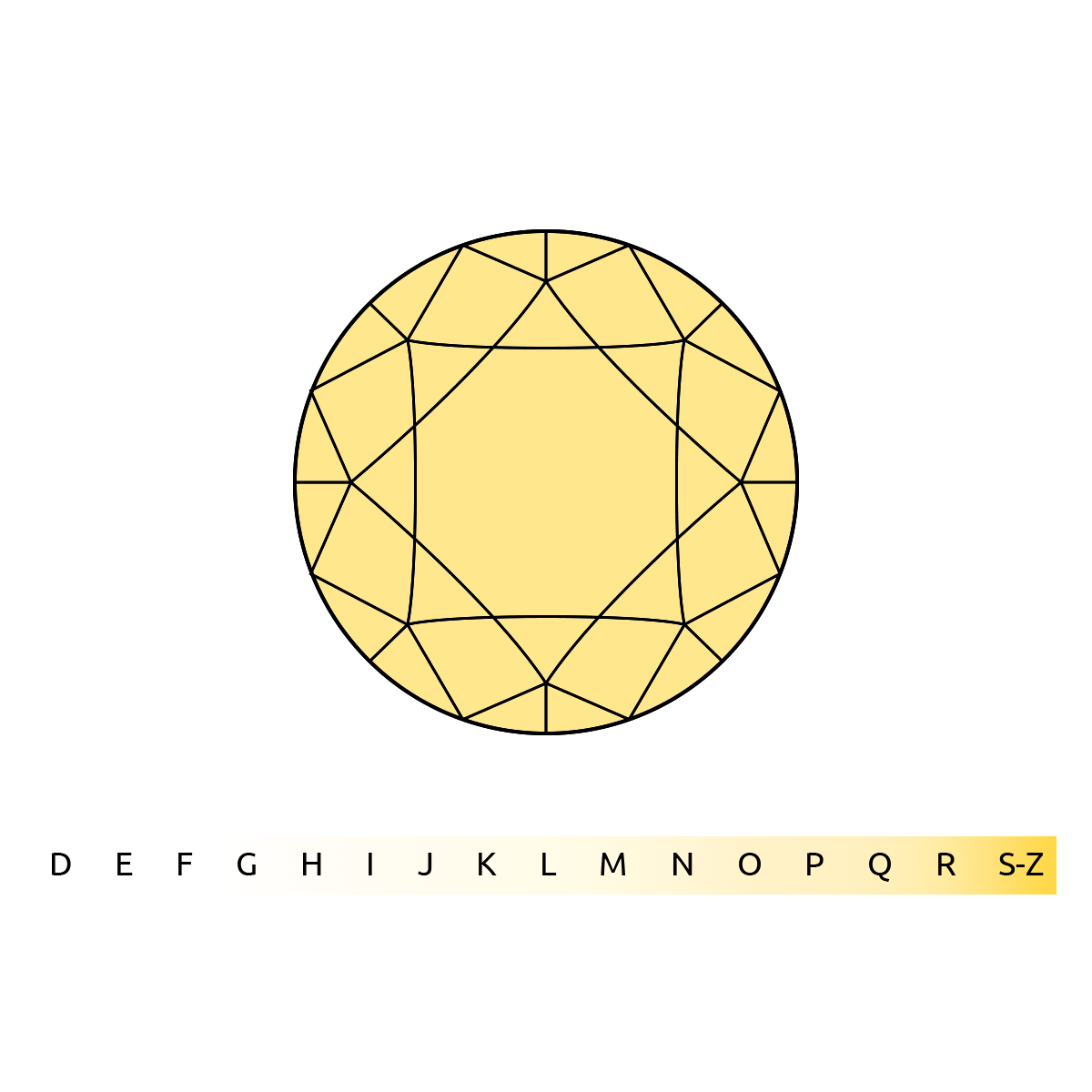Diamond Chart
Your guide to universally recognised diamond standards.
- 2 CTS (200 pts)
- 1 CT (100 pts)
- 0.75 CT (75 pts)
- 0.50 CT (50 pts)
- 0.25 CT (25 pts)
- 0.18 CT (18 pts)
- 0.15 CT (15 pts)
- 0.10 CT (10 pts)
- 0.05 CT (5 pts)
2 CTS (200 pts)

1 CT (100 pts)

0.75 CT (75 pts)

0.50 CT (50 pts)

0.25 CT (25 pts)

0.18 CT (18 pts)

0.15 CT (15 pts)

0.10 CT (10 pts)

0.5 CT (5 pts)

COLORLESS

NEAR COLOURLESS

FAINT YELLOW

LIGHT YELLOW

YELLOW

- Flawless & Internally Flawless
- VERY,VERY SLIGHTLY INCLUDED
- VERY SLIGHTLY INCLUDED
- SLIGHTLY INCLUDED
- INCLUDED
Flawless and Internally Flawless

VERY,VERY SLIGHTLY INCLUDED

VERY SLIGHTLY INCLUDED

SLIGHTLY INCLUDED

INCLUDED

Colour
International School of Diamond
Diamonds range from colourless through to the whole spectrum. Almost all diamonds – 98-99% in parenthesis– have traces of nitrogen in their crystal structure. This causes the absorption of blue light, which imparts some degree of yellow tint on the diamond.
Colourless diamonds are those with insignificant amounts of nitrogen. These are graded at the top of the scale. Colour grades for these diamonds range from Colourless D through to Z and on to Fancy Vivid Yellow.
Natural diamonds can also occur in every shade of the rainbow. Known as Fancy Colours, these are graded according to their tone and saturation.


Cut
International School of Diamond
Science and art combine to make the most of a diamond through it’s cut. The right proportions, finish and polish create and increase internal reflections to maximise a diamond’s sparkle and enhance its impact.
The aim is to set off a diamond’s three key features: brilliance, fire and scintillation. Brilliance refers to brightness, or the return of white light due to internal and external reflections. Fire is the dispersion of white light into its component rainbow colours. Scintillation is a diamond’s distinctive sparkle, the sum of flashes of light both reflected and refracted as either the diamond or the light source moves.
With a clear understanding of the dimensions and angles of a diamond’s facets, the cutter combines individual skill with the optical properties of the diamond itself to bring it to life. When assessing the cut of a diamond, a grader will focus on the relative proportions of four key areas: the table (the top flat facet), the crown (upperside) the girdle (the edge around the diamond) and the pavilion (the underside). Our graders determine a diamond’s overall cut grade by taking into account its proportions, measurements, polish and symmetry.






